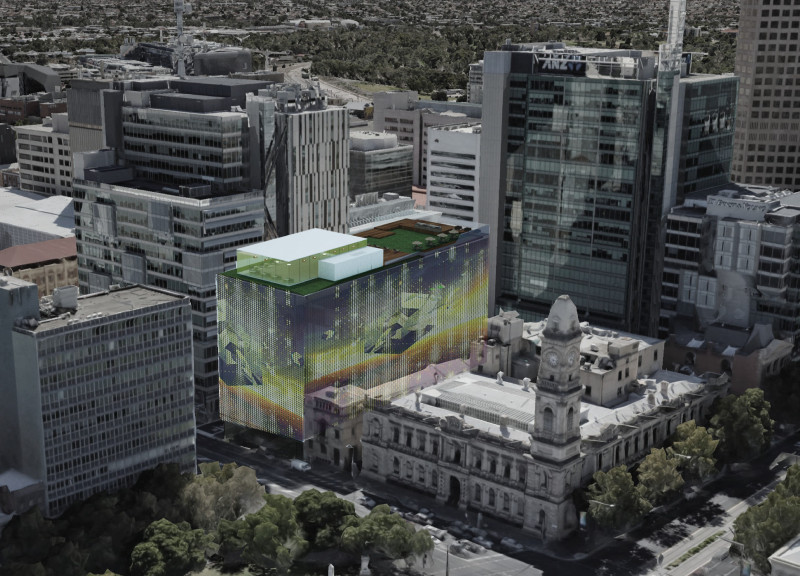5 key facts about this project
The Adelaide Creative Community Hub is a facility located in the center of Adelaide, South Australia. It focuses on supporting the diverse creative community in the city by providing various spaces designed for collaboration and sharing of ideas. The design emphasizes connection and interaction, allowing individuals from different creative fields to come together and work side by side.
Design Concept
At the heart of the structure is a lift hub that rises above ground. This design choice creates an open space that allows for easy movement throughout the building. The raised hub promotes natural encounters among users, making it simpler for people to engage with one another. The staggered arrangement of spaces also enhances visibility, allowing individuals to see and appreciate the work happening in different areas.
Spatial Organization
The building includes various dedicated areas, such as a rooftop deck, cafeteria, library, music production rooms, dance and drama spaces, exhibition areas, workshops, and studios. Each space is carefully designed to be flexible, accommodating a wide range of activities suited to the creative community's needs. Communal areas like the rooftop deck and cafeteria encourage informal interactions, where spontaneous collaborations and discussions can occur.
Architectural Integration
Careful consideration has been given to how the building relates to its surroundings. Large windows and openings throughout the design provide engaging views of the urban landscape, connecting the activities inside with the life of the city outside. This integration helps enhance the experience of users and emphasizes their connection to the community beyond the walls of the hub.
Facade and Engagement
The facade features a mesh skin that serves multiple purposes. This design not only looks appealing but also functions effectively within the urban context. By acting as a visual point of interest, the facade invites curiosity and encourages people to explore what lies inside. This thoughtful detail resonates with the activities happening within, creating a bridge between the structure and its environment.


























